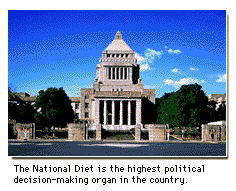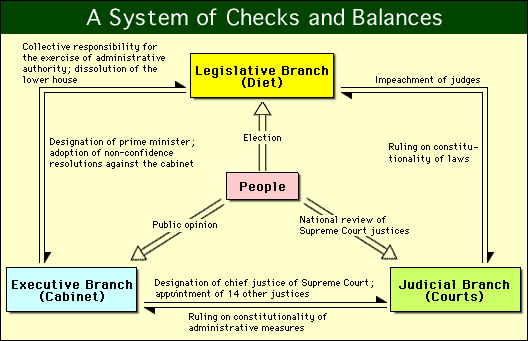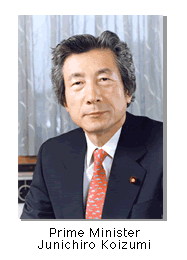 |
 Japan has a democratic system of government. The Japanese Constitution, which came into force in 1947, is based on three principles: sovereignty of the people, respect for fundamental human rights, and pacifism. Japan has a democratic system of government. The Japanese Constitution, which came into force in 1947, is based on three principles: sovereignty of the people, respect for fundamental human rights, and pacifism.
All Japanese people can vote once they reach the age of 20. The National Diet, Japan's parliament, consists of two chambers: the House of Representatives and the House of Councillors. Once elected to the Diet, legislators vote on laws for the country. The government is divided into the legislative, executive, and judicial branches. Each of these is independent and able to keep an eye on the other two; this helps protect people's freedom, as power is prevented from becoming too concentrated in one section of government. The Emperor of Japan is a symbol of the state and the unity of the people. He is not involved in the government of Japan. The heads of regional governments and local assembly members are chosen by election. |

| Photos courtesy of Ministry of Foreign Affairs. |
 The
Japanese do not elect a president directly, like the Americans or the
French. Japan has a parliamentary cabinet system of government like
Britain and Canada. This means that Diet members elect a prime minister
from among themselves, who then forms a cabinet and administers the
nation. The current prime minister is Junichiro Koizumi.
The
Japanese do not elect a president directly, like the Americans or the
French. Japan has a parliamentary cabinet system of government like
Britain and Canada. This means that Diet members elect a prime minister
from among themselves, who then forms a cabinet and administers the
nation. The current prime minister is Junichiro Koizumi.

